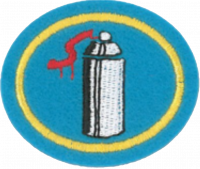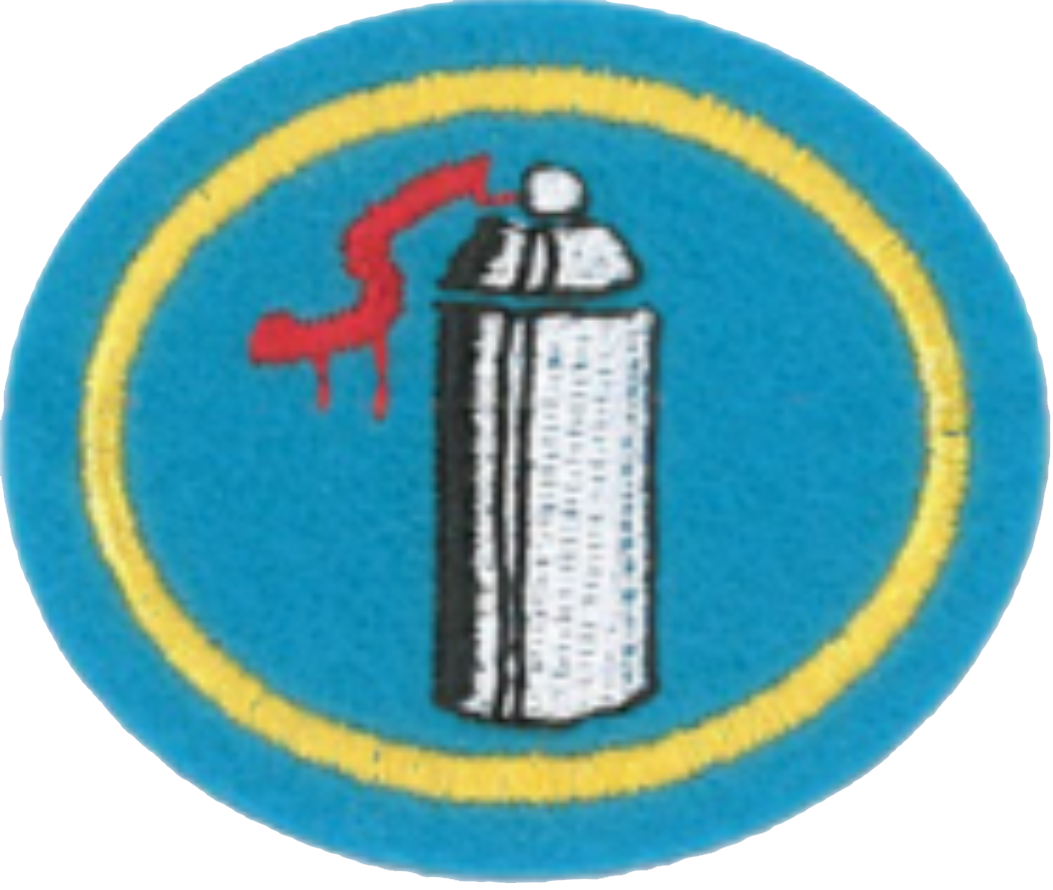Especialidades JA/Arte callejero/Respuestas
Nivel de destreza
2
Año
2020
Version
29.04.2024
Autoridad de aprobación
División Norteamericana
1
2
God “painted” this world and “tagged” His name on this finished painting with His “tag” on the seventh day. Genesis 1-2
3
The term graffiti originally referred to the inscriptions and markings found on the walls of ancient ruins, such as in the civilizations of Greece and Rome. Graffiti was done by the ancient Egyptians, the Vikings, and even the Mayans. These people communicated with each other about daily life, current events, news, etc., offering us a direct look into their ancient street life. It is a tradition of communication. Even before this, there were caves in France where men left markings on the walls to let us know who was there. Over the centuries those caves changed into the tunnels of the New York subway system, other big city neighborhoods, and computer desktops.
The beginning of what we call modern graffiti was laid out in Philadelphia in the late 1960s. Two writers (taggers) named Cornbread and Cool Earl were credited with the first early efforts. They gained a lot of attention for leaving their names everywhere. Then somehow this idea traveled from Philly to New York around 1971, around the birth of the Hip Hop subculture. Soon after, New York produced one of the first writers to get even more attention -- Taki 183. After an interview with him, hundreds of kids started writing their names all over New York.
As graffiti became more and more popular, writers created new styles, and challenged new ways to stand apart from each other, and it continues today.
Graffiti art is a uniquely American art form. Today, it is influencing the work of creative individuals worldwide in areas as diverse as graphic design, photography, advertising, marketing, illustration, fine art, and even multimedia and technology.
Why are we attracted to graffiti? Part of it has to do with the psychology of affirmation. There is something inside of us that wants to take up space and proclaim our existence. We want to be famous, seen, recognized, acknowledged, and affirmed. Graffiti can do that. It has always been about rebellion, style, observation, and self-worth. Unfortunately, these descriptions are fed by negative actions.
4
Started by YOUTH of Philadelphia and New York in the late 1960s An alternative to gang warfare The 1980s were the Golden Age of graffiti Pioneers of graffiti were Cornbread, Cool Earl, and Taki 183 Graffiti art was adopted into the Hip Hop culture which included rap music, disc jockeys and break dancing By the 1990s, Hip Hop culture had lost its initial vibrancy, but had become known worldwide and accepted as a part of mainstream US culture Two kinds of writing, public and private Street art, as well as graffiti, is about styles
5
5a
A practitioner of graffiti who creates graffiti formats for the purpose of vandalism
5b
Your alter ego name/signature/brand; where your artistry starts
5c
Writings or drawings scribbled, scratched, or sprayed illicitly on a wall or other surface in a public space
5d
The ability to control the spray pressure and amount of paint sprayed
5e
Quick and stylish signatures of the individual person
5f
A throw-up or “throwie” generally consists of a one-color outline and one layer of fill-color. Easy-to-paint bubble shapes often for letters.
5g
A large, complex, and labor-intensive graffiti painting consisting of letters; because they take so much time and effort, burners in downtown areas are more likely to be legal pieces, painted with the consent of the property owner
5h
A large picture painted or affixed directly on a wall or ceiling
5i
To “go over” a piece of graffiti simply means to paint on top of it
5j
The nozzle for the aerosol paint can, also referred to as “tips”; different kinds are used for different styles
5k
A group of associated graffitists that often work together; crews are differentiated from gangs in that their main objective is to paint graffiti
5l
To remove painted graffiti with chemicals and other instruments, or to paint over it with a flat color
5m
Graffiti with text so stylized as to be difficult to read; often with interlocking three-dimensional type
5n
To bomb or hit is to paint over many surfaces in an area
5o
A legalized form of artistic vandalism, where the artwork often depicts a message
6
6a
6b
6c
6d
6e
6f
6g
6h
6i
6j
6k
6l
7
7a
Doodling: graffiti that we all did/do on our desk growing up in school Latrinalia: graffiti we see at rest stops or gas station restrooms
7b
Gang graffiti:graffiti written in public areas by local gangs; purpose of this is to mark territory and cause terror in the community Tags: quick and stylish signatures of the individual person Throw ups: a throw-up or “throwie” generally consists of a one-color outline and one layer of fill-color. Easy-to-paint bubble shapes often for letters. A throw-up is designed for quick execution, to avoid attracting attention to the writer. Throw-ups are often utilized by writers who wish to achieve a large number of tags while competing with rival graffitists. Most graffitists have both a tag and a throw-up that are essentially fixed compared to pieces. It is mostly so because they need to have a recognizable logo for others to identify them and their own individual style. Walls/pieces: a large, complex, and labor-intensive graffiti painting consisting of letters. Pieces often incorporate 3D effects, and many colors and color transitions, as well as various other effects. These will usually be done by writers with more experience. A piece requires more time to paint than a throw-up. If placed in a difficult location and well executed, it will earn the writer more respect. Piece can also be used as a verb that means “to write.” Murals/street art: a large picture painted or affixed directly on a wall or ceiling
8
Street art adorns the landscape; graffiti tagging scars it and accelerates urban decay Street art stretches your mind; graffiti closes it Street art is about the audience; graffiti is about the tagger/writer Street art says “have you thought about this?”; graffiti says “I tag, therefore I exist” Street art is done with a smile; graffiti is done with a scowl Street art takes skill; graffiti takes guts Street art delivers a message; graffiti delivers a mess We mourn losing street art and celebrate losing graffiti tagging.
Influence: Kids ages 13-18 are more sensitive to graffiti Teens living in the city Described as “taggers,” “writers,” “bombers” Cry for attention It is an adrenaline rush It is about respect This rebellious attitude against society is often manifested in their defiance against authority Media and subculture have a strong role
9
9a
9b
9c
9d
10
10a
10b
Practice, practice, practice
Note: Always spray by strokes (have a 1, 2.1, 2.1, 2 count), not a consistent spray. This prevents overspray and drips.
10c
10d
10e
11
Note: Always draw out your first initial drawing with a very light color then do the final drawing with a slightly darker color. Similar to how one would first draw with a pencil and follow it with a pen.
12
But you are a chosen generation, a royal priesthood, a holy nation, His own special people, that you may proclaim the praises of Him who called you out of darkness into His marvelous light;
Let every soul be subject to the governing authorities. For there is no authority except from God, and the authorities that exist are appointed by God.
13


